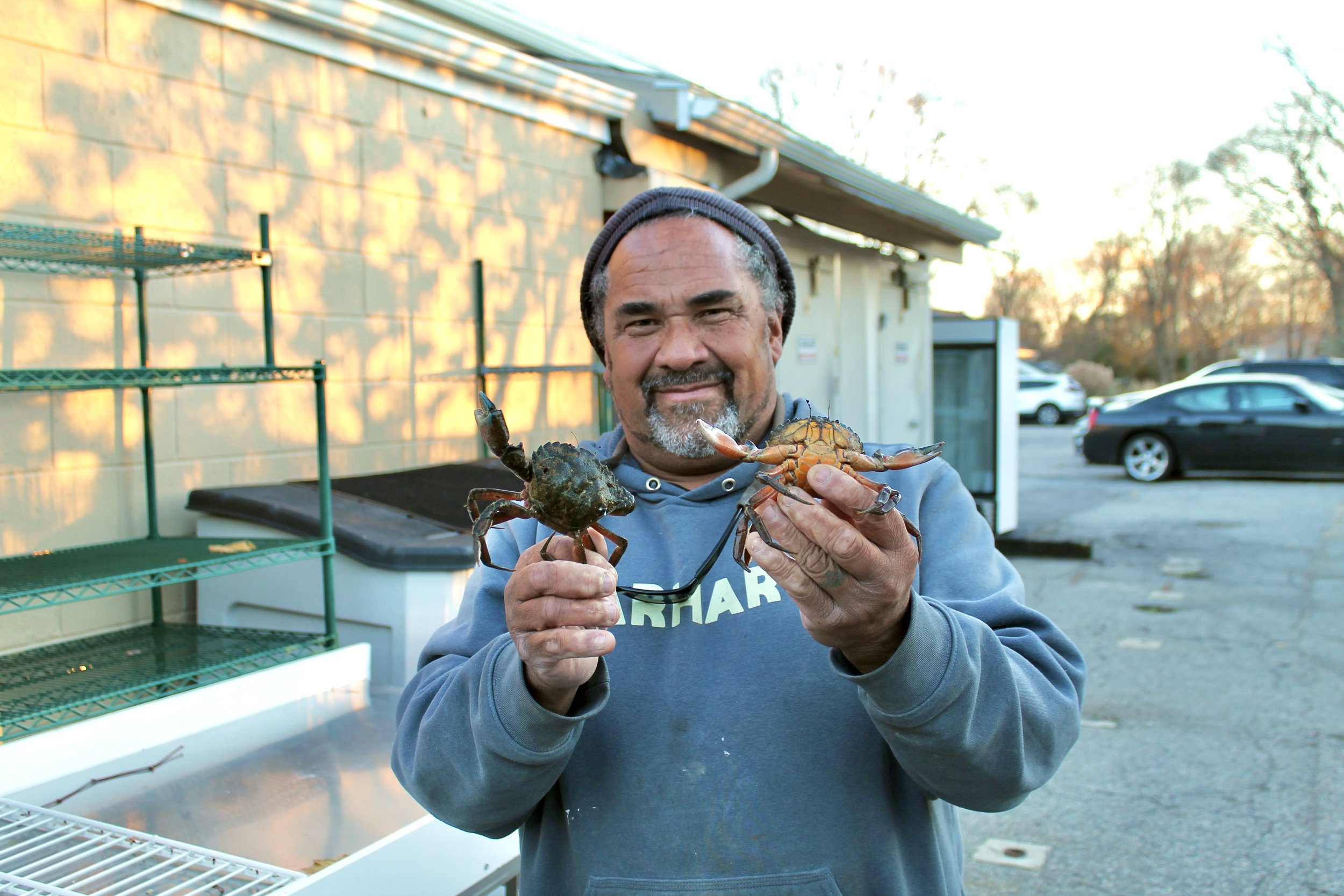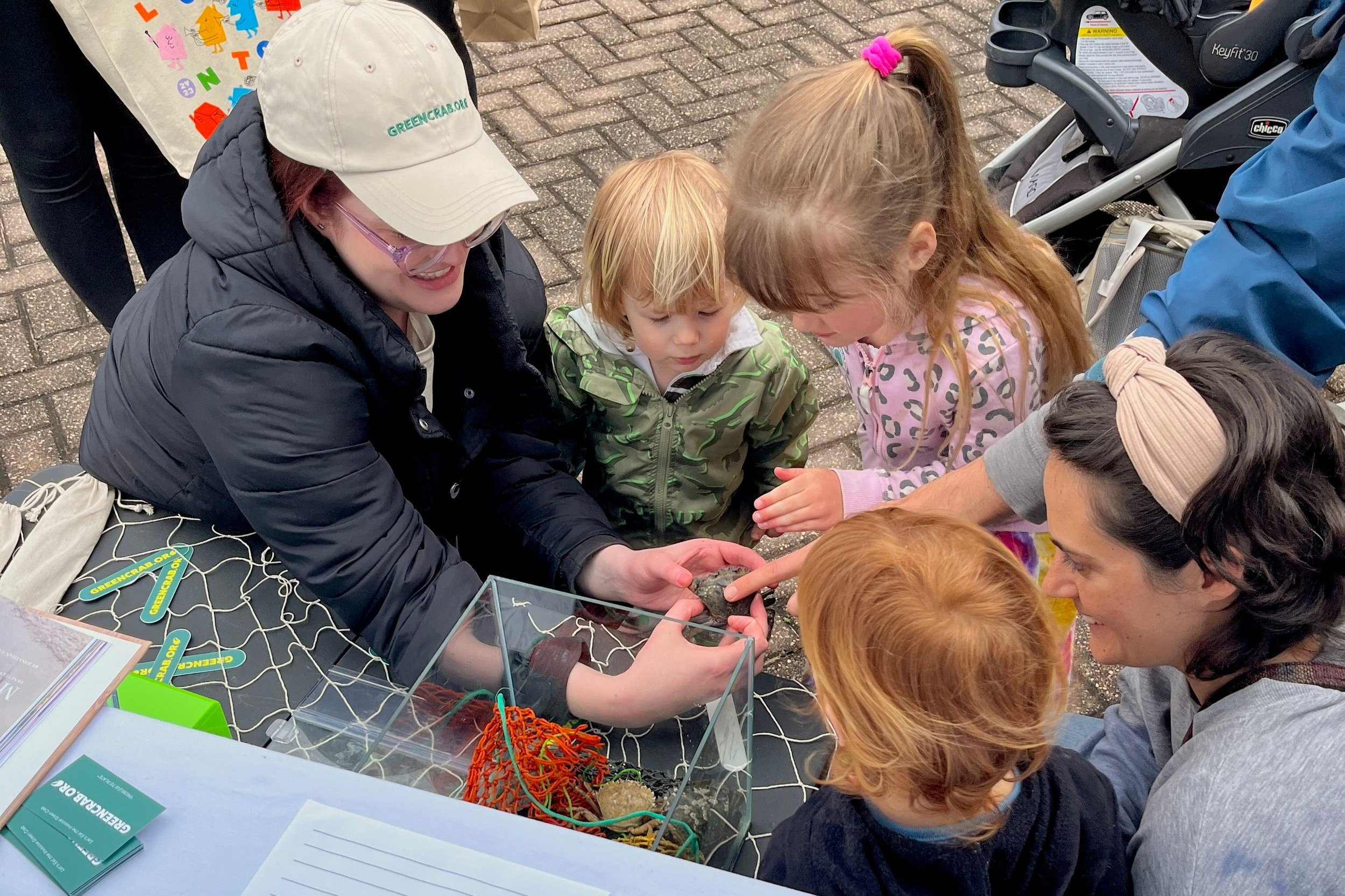Cooking with Green Crabs FAQ
James Beard Award Winner David Standridge of The Shipwright’s Daughter answers some basic questions about green crabs and how he cooks with them
How can you eat green crabs?
Green crabs are great for adding flavor to stocks, sauces, butters, soups, and stews. They can also be fermented, cultivated soft-shell, or shucked for roe, meat, and crab fat.
The Shipwright’s Daughter uses 60-100lbs of green crabs a week, creating a stock that serves as a base for spicy crab oil, aioli, bouillabaisse, rice dishes, vinegars, and poached fish.
Get creative - don’t stop at soup! Check out our new recipe page for inspiration and information.
Why can’t harvesters sell green crabs to restaurants if they’re already catching them for bait?
They can! Most harvesters who sell green crabs to restaurants also sell them on the bait market.
The problem for many licensed harvesters is a lack of regular demand. If your seafood purveyor doesn’t offer green crabs, ask if they can! Consumers have the power to change the way distribution works, but the laws of supply and demand only work here if we keep asking for green crabs.
Reach out to maryparks@greencrab.org with any questions about sourcing green crabs, connecting with harvesters, or regulations
Is there a green crab season – if they’re invasive why can’t I get them all year round?
Kind of? Historically, green crabs hibernate in the winter, burrowing into salt marsh beds to protect themselves in the colder months. In New England, it used to be difficult to access green crabs from mid-December to mid-April. However, climate change and warming waters have caused the hibernation period to get shorter and shorter, resulting in a population boom. Some harvesters now trap year-round.
Where can I go to enjoy green crabs? How can I get them?
The Shipwright’s Daughter uses them as a staple ingredient when they are in season! You can also head over to GreenCrab.org’s homepage to find a live list of restaurants featuring green crabs on their menu in a town near you! Looking to cook with green crabs on your own? Check out GreenCrab.org’s “Where to Buy” page to find a harvester or supplier selling green crabs for culinary use.
Can you eat green crabs for meat?
While you can pick green crabs for meat, you’ll need a little more patience and effort shucking them in comparison to larger crab species like blue crab, snow crab, or rock crab. Green crab meat is sweet and delicate and tastes pretty similar to blue crab meat. To save a little time, check out this crab lollipop tutorial.
Where are green crabs from and are they eaten in their native range?
European green crab’s native range spans from North Africa to Northern Europe where they’re found in a wide variety of cuisines. In Portugal, Spain, Ireland, and Denmark green crab is often used to add flavor to sauces and soups. In Venice, Italy soft-shell Mediterranean green crab is a coveted seafood, and their roe is popular as well.
Are there soft-shell green crabs in the US?
The process of molting green crabs is incredibly labor-intensive but some US harvesters such as Michael Masi of Shell + Claw have had success in molting invasive soft-shell green crabs and selling small batches to restaurants.
In Venice, Italy soft-shell Mediterranean green crabs are a coveted seafood that can retail for up to 100 €/kg. Moecante (Venetian soft-shell green crab harvesters) dedicate their entire career to molting soft-shells and selling green crab roe in the off-season.
This FAQ was inspired by our Earth Week 2024 Series with Shipwright’s Daughter, Eating with the Ecosystem, and Stonington Kelp:
Board Member & Shipwright’s Wine Director Kathleen Standridge holding a green crab at Groton Eco Fest
GreenCrab.org Executive Director Mary Parks hosts a touch tank next to Eating with the Ecosystem at Groton Eco Fest
Green Crab Poached Monkfish, Sugar Kelp, Fennel Cream, @moromishoyu Kelp Shoyu featured at Shipwright’s 2024 Kelp Dinner
David Standridge demonstrates how to cook with green crabs, kelp, and whole fish in a restaurant setting during a demo at Millwright’s Restaurant with CT Chefs
Green Crab Rice prepared by David Standridge at Millwright’s Restaurant
Learn more about how Shipwright’s Daughter cooks with green crabs in our Green Crabs On the Menu blog series













